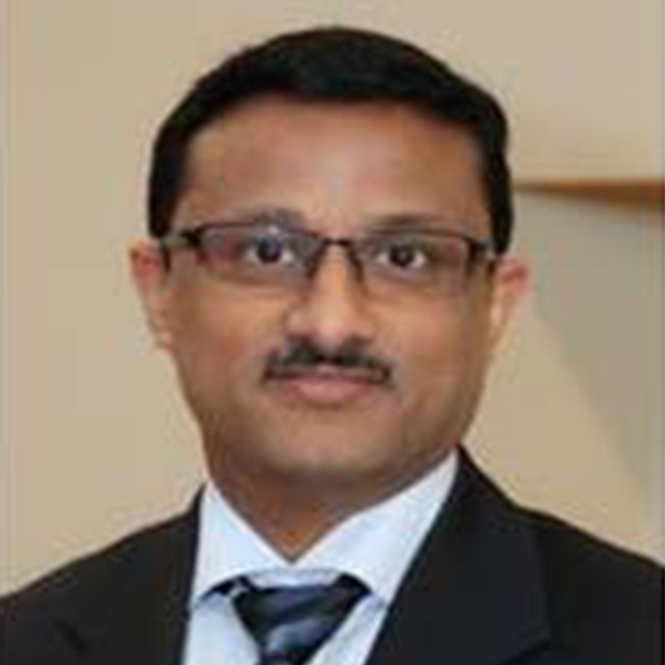As one of the most famous classical composers, Wolfgang Amadeus Mozart often evokes complexities from previous periods, having created a combination of old, current and new uses for musical devices culminating in a masterpiece. As a composer, Mozart was extremely versatile, working in every major genre – and he is credited as advancing the technical sophistication and emotional reach in each form. He spent the last decade of his life living and composing in Vienna, the location of 2018’s European Society of Cataract and Refractive Surgeons (ESCRS) and the European Society of Retina Specialists (EURETINA) congresses . . . and that got us thinking: If Mozart were an ophthalmologist today, instead of a composer then, what would he do?
Based on his musical style, we could say that his surgical technique would use a mix of traditional and modern therapies, with new insights. His versatility would (naturally) extend into ophthalmology, so he would be well-versed in every major subspecialty. In addition, his innovations and methods would undoubtedly advance the therapies, techniques and the tools of the trade. Indeed, Mozart would be looking into the future. Here we imagine which instruments (or therapies) Mozart would use as an ophthalmologist to create the perfect symphony of treatment.
Lasers and Anti-VEGF for the treatment of Diabetic Retinopathy (in C Minor)
Like Mozart blending the older Baroque and newer Classical style, today, many ophthalmic conditions are treated with a combination of traditional and modern therapies. To Mozart, laser photocoagulation – which has been the mainstay of diabetic retinopathy treatment since the mid-20th century – would be a traditional, or Baroque, therapy. Its use was diminished by the more recent advent of anti-vascular endothelial growth factor (anti-VEGF); however many revolutionary advances in laser technology have been developed since.1
Dr. Alay S. Banker, the director of Banker’s Retina Clinic and Laser Centre in Ahmedabad, India, finds harmony by using traditional laser pan retinal photocoagulation (PRP) for proliferative diabetic retinopathy (PDR) and modern anti-VEGF therapies for diabetic macular edema (DME). Dr. Gemmy Cheung, MBBS(Lond), FRCOphth(UK), deputy head and senior consultant of the medical retina service for Singapore National Eye Centre (SNEC) and senior clinical investigator for the Singapore Eye Research Institute (SERI), also uses modern anti-VEGF treatments to treat DME.
“With anti-VEGF therapy, we use new pharmacologic agents, of which there are currently several in clinical use, as opposed to using laser (traditional method),” said Dr. Cheung.
However, like Mozart, she is looking ahead: “Newer pharmacologic agents with even longer duration of action will be useful.”
Both Drs. Banker and Cheung see more innovation on the horizon. He says new lasers – like subthreshold or micropulse lasers – will aid in the future treatment of DR and its related complications. These insights are echoed by Dr. Cheung, who has also heard that new lasers, like micropulse lasers, have been reported by investigators to produce good results for treating conditions like DME.
A Revolution of Lasers and Implants (an Encore)
A 2015 paper published by Samuel Yun and colleagues reported on newer lasers and treatments for DR and its related conditions.1 Whereas conventional laser therapy utilizes continuous wave of energy delivery, micropulse mode divides a single energy delivery of laser burn with cycles of 100 µs on time and 50 µs off down time until the full duration of laser spot (100–300 ms) is delivered.
The authors concluded that pilot studies have suggested the benefit of these subthreshold diode lasers [along with navigational lasers (NAVILAS)] for treating DME, while randomized trials combining these lasers with anti-VEGF therapy are yet to come.1
In addition to advances in laser technology, Dr. Banker says newer drug therapies for intravitreal use apart from anti-VEGFs will aid in the future treatment of DR. Indeed, new (Mozart-approved) treatment paradigms are in the works. A 2017 study published in Open Ophthalmology Journal reported that combined intravitreal dexamethasone (DEX) implant and micro-pulse laser for anti-VEGF resistant DME is both safe and effective.2 A meta-analysis published in 2018 evaluated the effectiveness and safety of DEX implant and intravitreal anti-VEGF treatment for DME. The authors found that compared with anti-VEGF, the DEX implant improved anatomical outcomes significantly – however, this did not translate to improved visual acuity, which may be due to the progression of cataract. They concluded that the DEX implant may be recommended as a first choice for select cases, such as for pseudophakic eyes, anti-VEGF-resistant eyes, or patients reluctant to receive intravitreal injections frequently.3
Artificial Intelligence and Machine Learning for Retinal Disease (an Opera)
Perhaps – out of all the new innovations – Mozart would have been most interested in the revolutionary implications of artificial intelligence (AI) and machine learning (ML). At the 2018 EURETINA congress, several sessions are dedicated to AI, regarding screening, diagnosis and treatment pathways for different posterior segment conditions.
Dr. Banker says: “Artificial intelligence and machine learning are being used to develop algorithms for mass screening and early detection of diabetic retinopathy.” A 2018 study called “Artificial intelligence in retina,” notes that fully-automated AI-based systems have recently been approved for screening of DR. The authors noted that the potential for this technology includes screening, diagnostic grading as well as guidance of therapy with automated detection of disease activity, recurrences, quantification of therapeutic effects and identification of relevant targets for novel therapeutic approaches. In addition, they concluded that “prediction and prognostic conclusions further expand the potential benefit of AI in retina which will enable personalized health care as well as large scale management and will empower the ophthalmologist to provide high quality diagnosis/therapy and successfully deal with the complexity of 21st century ophthalmology.”4
Dr. Harvey Uy, M.D., is the medical director at the Peregrine Eye and Laser Institute in Makati City, Philippines. He says that AI is an area of great research. Particularly regarding polypoidal choroidal vasculopathy (PCV), he says: “Artificial intelligence will compile genetic, demographic, phenotypic, angiographic, and previous response to treatment information and develop treatment algorithms for each patient.”
PHACO, lasers and IOLS (a Piano Concerto of Cataract with Astigmatism)
Dr. Uy also finds a mix of conventional and contemporary treatments benefit his patients with cataract (+ astigmatism). He says his first line of treatment is 75% conventional and 25% contemporary, being PHACO and laser-assisted (respectively). Like Mozart, Dr. Uy is also looking toward the future, noting that upcoming adjustable intraocular lenses (IOL) will allow surgeons to correct refractive errors that occur immediately, or even years after surgery.
One such adjustable lens was recently approved (November 2017) by the US Food and Drug Administration (FDA). The Light Adjustable Lens and Light Delivery Device from RxSight Inc. (formerly Calhoun Vision) is the first medical device system that can make small adjustments to the artificial lens’ power after cataract surgery. According to the company, the IOL is made of a unique material that reacts to UV light, which is delivered by the Light Delivery Device, 17-21 days after surgery. Patients receive three or four light treatments over a period of 1-2 weeks, each lasting about 40-150 seconds, depending upon the amount of adjustment needed. The device is intended for patients who have astigmatism (in the cornea) before surgery and who do not have macular diseases.5
“There are also femtosecond lasers that can change the IOL refractive index to correct refractive errors,” added Dr. Uy. “It is a bright future for cataract surgeons and patients as refractive errors after cataract surgery will likely someday be a thing of the past.”
Topical Therapies (a Chorus for Uveitis and Dry Eye Disease)
Two common ocular inflammatory diseases are uveitis, which is associated with inflammation of the inner eye, and dry eye disease, which affects the ocular surface. While the complexities of each condition vary, they are in the same genre – therefore traditional topical treatments are generally prescribed. According to Dr. Banker, steroids are often used topically and systemically for uveitis, while Dr. Uy prefers customized lubricants, ciclosporin drops, and limited steroid use to treat dry eye.
Like Mozart would, ophthalmologists today are seeking additional routes to ease discomfort from these inflammatory annoyances. Dr. Banker suggests that newer non-steroidal therapies and sustained drug delivery systems will aid in the future treatment of uveitis. This includes drugs like Humira, Sirolimus, as well as steroid implants and suprachoroidal drug delivery systems.
Those suffering from dry eye disease may also find relief soon, according to Dr. Uy. He currently uses the TearLab system and has recently employed keratography to treat dry eye. “Our Topcon slit lamp can also help us easily visualize the health of the Meibomian glands,” he added. “In addition, we look forward to the introduction of the Allergan TrueTear system, which is a non-invasive device that stimulates immediate tear production.”
The Next Great Act in Treatment (yet Unwritten)
As an ophthalmologist, Mozart would have advanced the technical sophistication of existing procedures – he would have been interested in applying new therapies, tools and techniques to existing treatments to enhance their efficacy. This forward-thinking is shared by ophthalmologists worldwide as they seek out better diagnosis, treatments and tools to increase prevention and reduce treatment burden.
Dr. Uy is one such forward-thinker. He says that extended treatment regimens will reduce the patient treatment burden for those suffering from PCV. This includes intravitreal injections every three to four months, and refillable anti-VEGF implants. Currently, Dr. Uy utilizes a combination of anti-VEGF and photodynamic therapy (PDT) for treating PCV.
And while Dr. Banker currently uses intravitreal injections to treat age-related macular degeneration (AMD), he sees quite a bit of innovation coming for those suffering from the condition. He says newer drugs, newer drug delivery systems, sustained-release devices, gene therapies, drugs targeting pathways other than VEGF, newer lasers will aid in the future treatment of AMD. It’s clearly an exciting time to be in ophthalmology as new devices, treatments and other innovations continue to emerge to advance the field. And at congresses worldwide, ophthalmologists in every major subspecialty convene and share ideas. Between the mixing of old and new, rapidly advancing innovation and the exchange of knowledge, we believe Mozart would have felt right at home as a 21st century ophthalmologist.
As the great composer said:
“We live in this world in order to always learn industriously and to enlighten each other by means of discussion and to strive vigorously to promote the progress of science and the fine arts.” – Wolfgang Amadeus Mozart
References:
1 Yun SH, Adelman RA. Recent Developments in Laser Treatment of Diabetic Retinopathy. Middle East Afr J Ophthalmol. 2015 Apr-Jun; 22(2): 157–163.
2 Elhamid AHA. Combined Intravitreal Dexamethasone Implant And Micropulse Yellow Laser For Treatment Of Anti-VEGF Resistant Diabetic Macular Edema. Open Ophthalmol J. 2017 Jul 21;11:164-172.
3 He Y, Ren XJ, Hu BJ, Lam WC, Li XR. A meta-analysis of the effect of a dexamethasone intravitreal implant versus intravitreal anti-vascular endothelial growth factor treatment for diabetic macular edema. BMC Ophthalmol. 2018 May 21;18(1):121
4 Schmidt-Erfurth U, Sadeghipour A, Gerendas BS, Waldstein SM, Bogunovi´c H. Artificial intelligence in retina. Prog Retin Eye Res. 2018 Aug 1. pii: S1350-9462(18)30011-9.5 FDA approves first implanted lens that can be adjusted after cataract surgery to improve vision without eyeglasses in some patients. November 22, 2017. Available at: https://www.fda.gov/newsevents/newsroom/pressannouncements/ucm586405.htm








